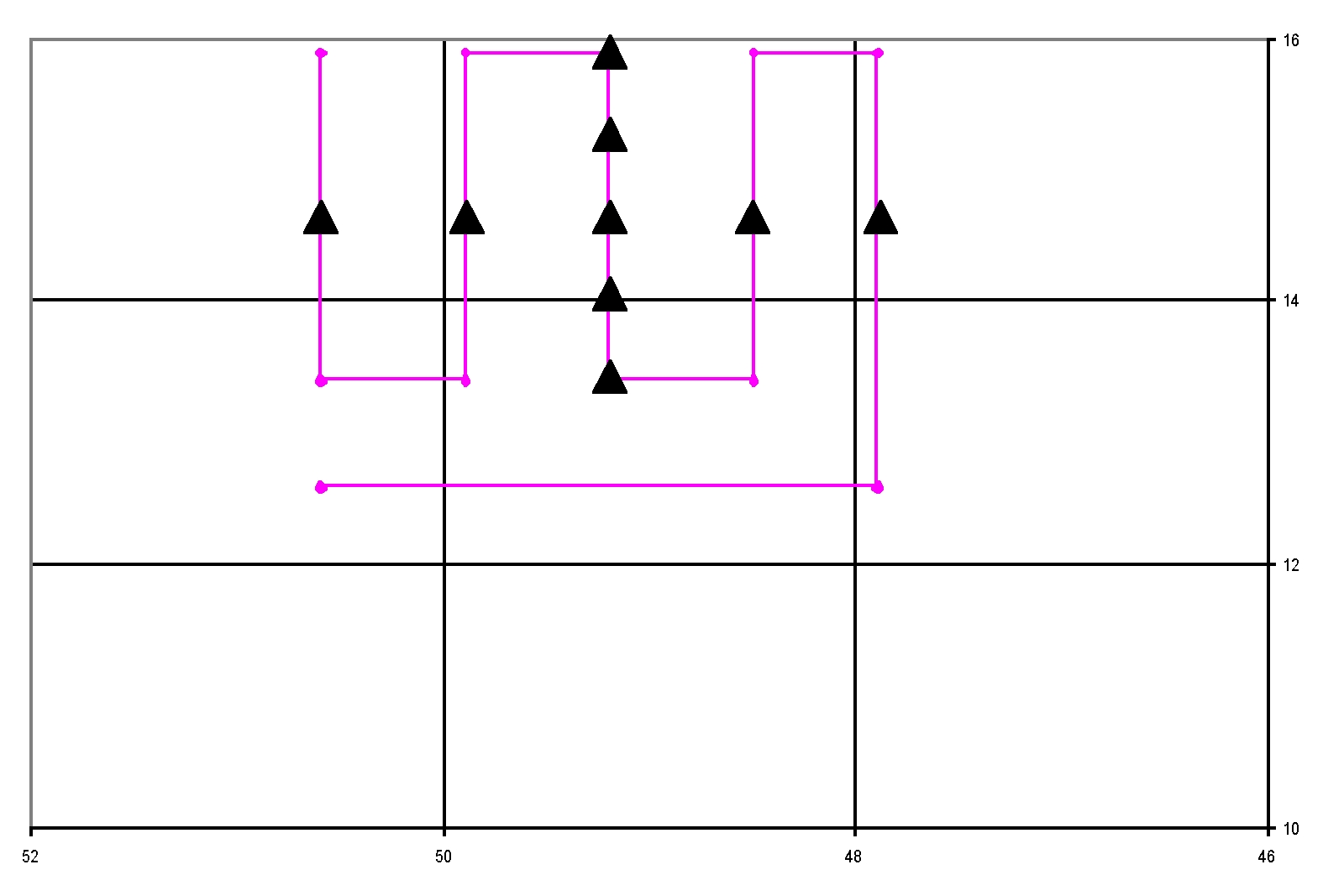
Figure 1. Planned flight pattern (pink line) for 070913I. Black triangles denote locations of GPS drops.
| LPS/Doppler/dropsonde Scientist | Rob Rogers |
| Doppler/dropsonde Scientist | Bob Black |
| Pilots | Barry Choy Mark Nelson |
| Flight Director | Jackie Almeida |
| Navigator | Pete Siegel |
| Flt. Eng. | Dewie Floyd |
| Data Tech | Terry Lynch |
| Elec. Tech | Jeff Smith
Damon Sans Souci |
Mission Plan :

This was an NWS-tasked 3-D Doppler Winds mission into Tropical Depression #8 located east-northeast of Barbados. The plan calls for flying a lawnmower-type pattern (Fig. 1) with north-south leg lengths of 160 nm. A total of 5 legs will be flown, separated by 40 nm. GPS drops will be released at midpoints of first, second, fourth, and fifth legs, and 80 nm, 40nm, and at the center point. The purpose of the drops is to get wind measurements in clear air, and to measure the thermodynamic field to look at radial gradients of equivalent potential temperature in the mid-to-low-levels in a weak system (ideally to compare with a mature system). The pattern will be flown at 12,000 ft. Also, during the flight the aircraft will conduct a SFMR test where it will circle around at a 45-degree bank angle in an area of high winds and no rain. A drop will be released at the completion of that maneuver. Doppler analyses will be performed on legs 2, 3, and 4.
Mission Summary :
The pattern was flown successfully. Takeoff was at 1953 UTC from Barbados. We had to adjust our pattern a little to the south and east because the center of circulation was displaced from where we'd originally thought. The storm was starting to experience some westerly shear associated with a trough in the central and eastern Caribbean (Fig. 2). Values near 10 kt were indicated by a
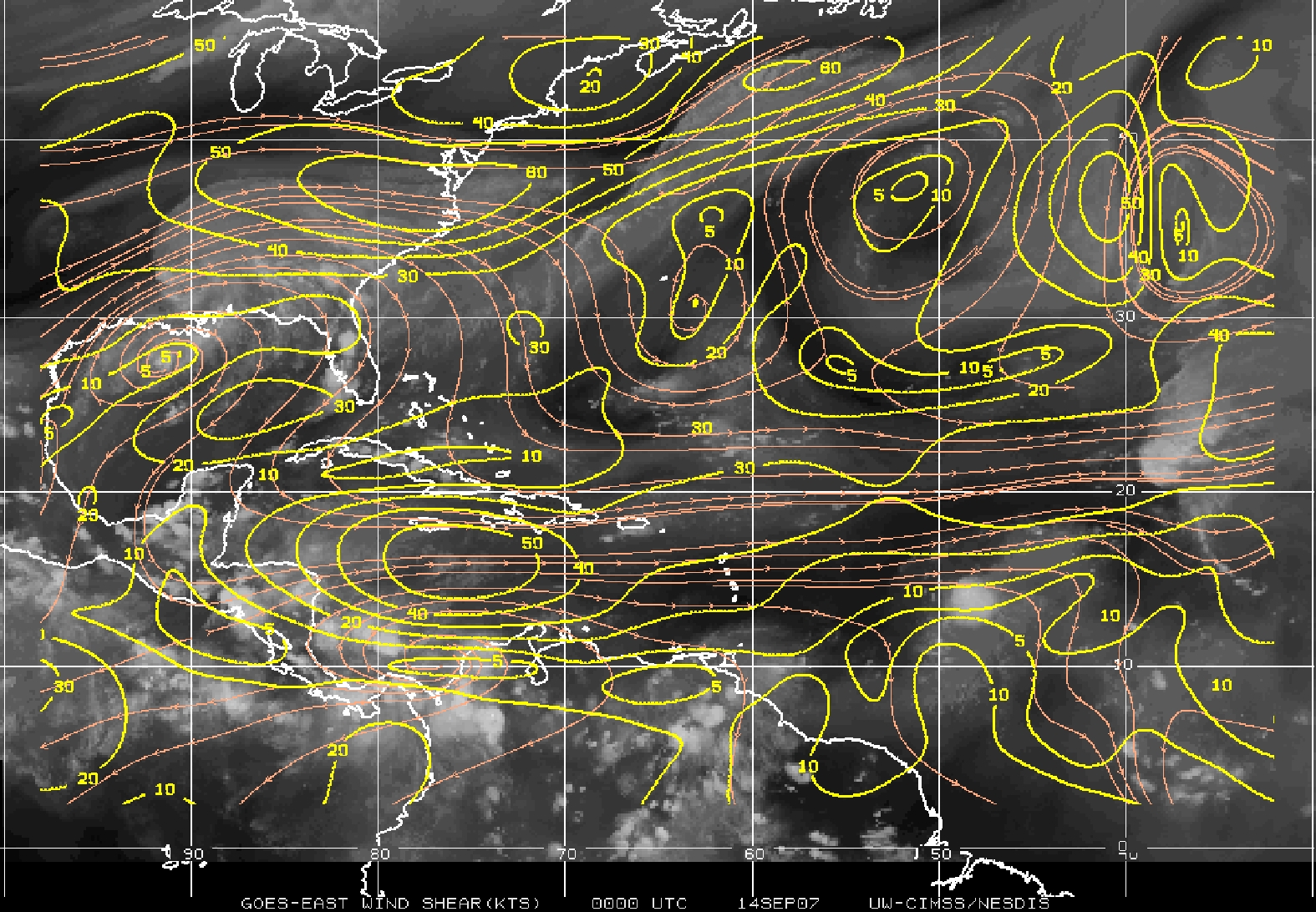
CIMSS analysis near the circulation center, with higher values in the expected path of the storm. The storm had a convective burst upon arrival on the south side (Figs. 3-4), though it was dissipating some during the pattern. On the center south-north leg we did the SFMR bank test, at 40 nm from the center. We dropped 9 sondes in each quadrant at 40 nm spacing. Landing at Barbados was at 0410 UTC.
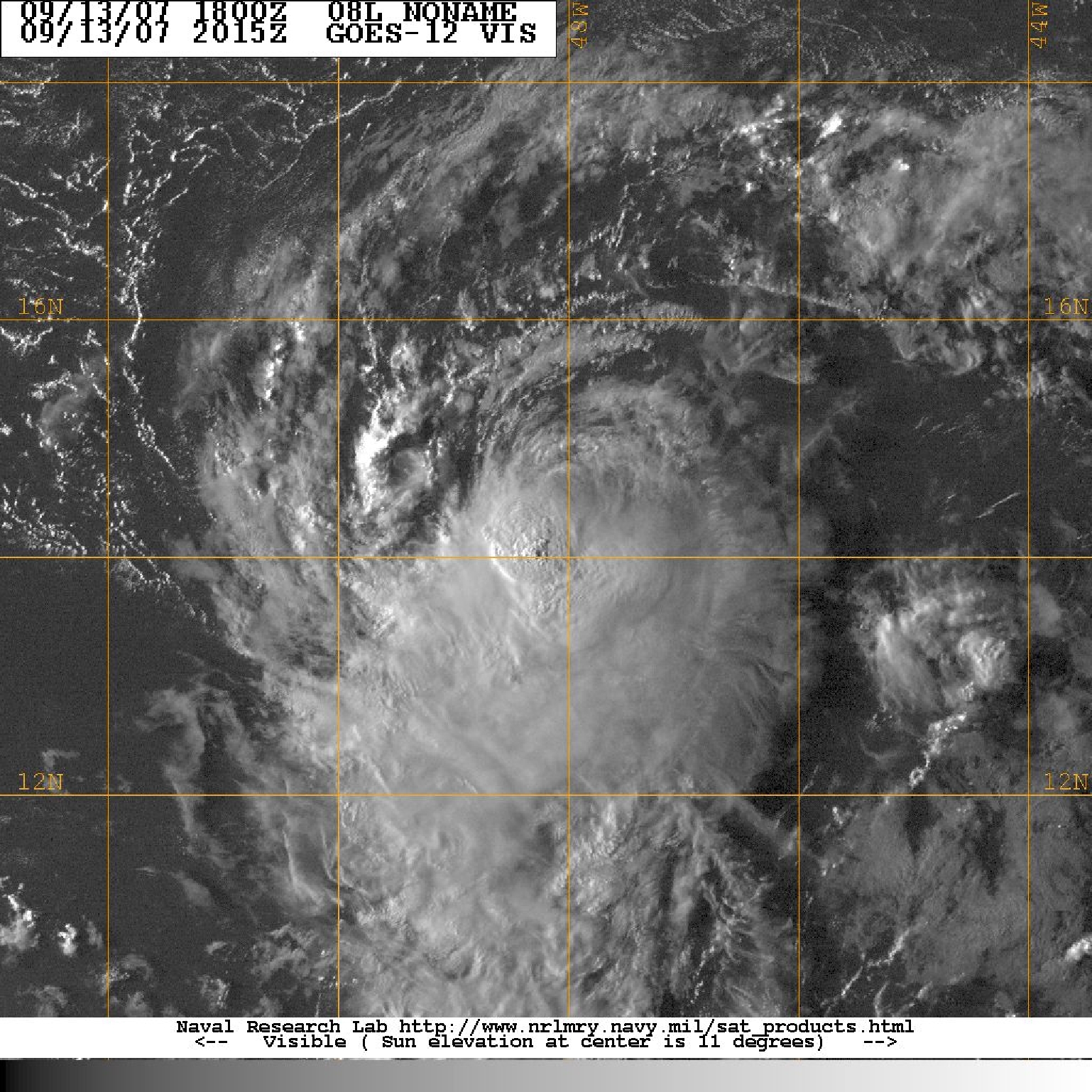
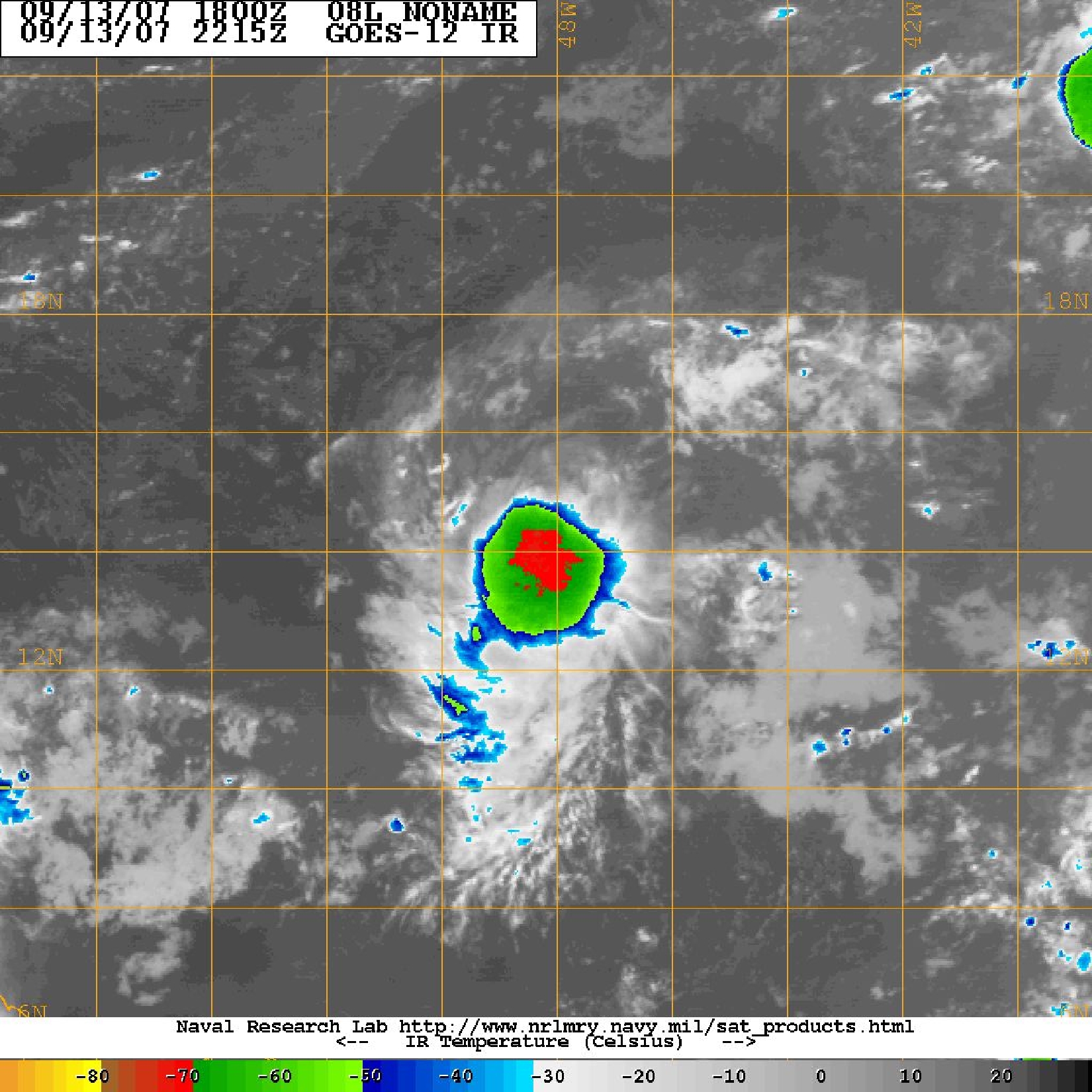
Overall the mission was reasonably successful. We sampled a convective system by passing in close proximity to it (Fig. 4). There were scatterers, but they were mostly on the south side of the circulation and limited on the north. Unfortunately, we could not complete an analysis because of problems in the way the some parameters were input into the programs. The data provided should be valuable for EMC, though, because it provides data in a weak, asymmetric storm experiencing shear. That will be a very challenging case for the development of data assimilation schemes.
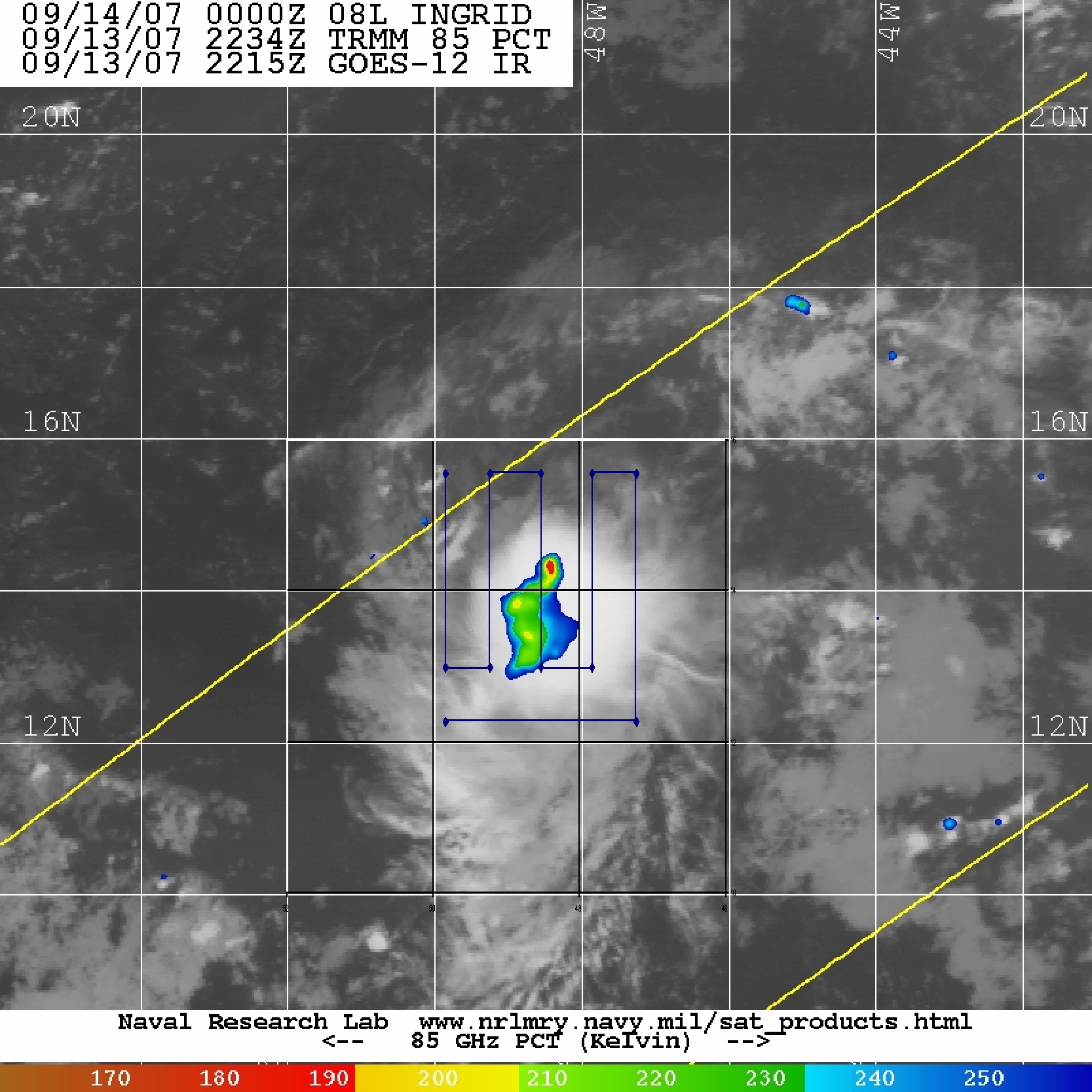
Problems :
There were no major problems with the dropsondes or the SFMR. The radar did lock up a few times and had to be reset though. Robert Rogers 9/18/07
Mission Data:
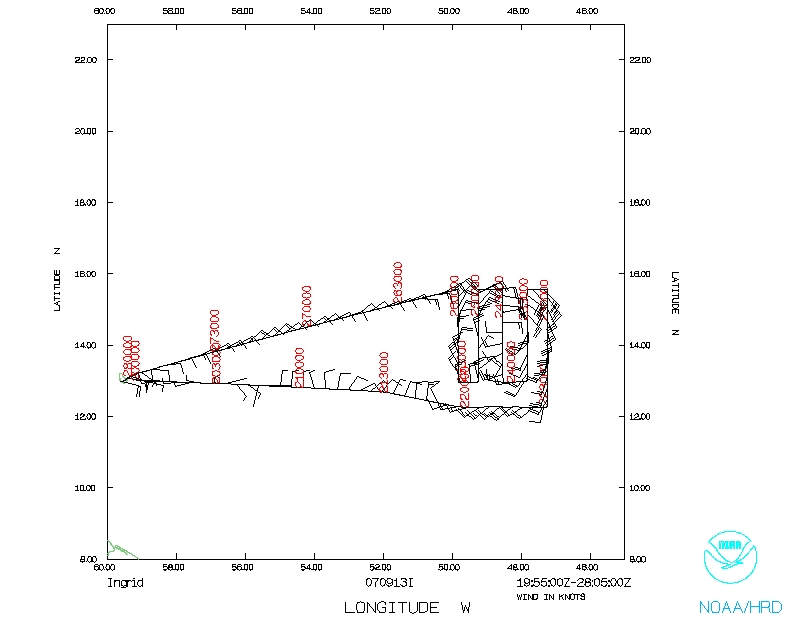 Flight track |
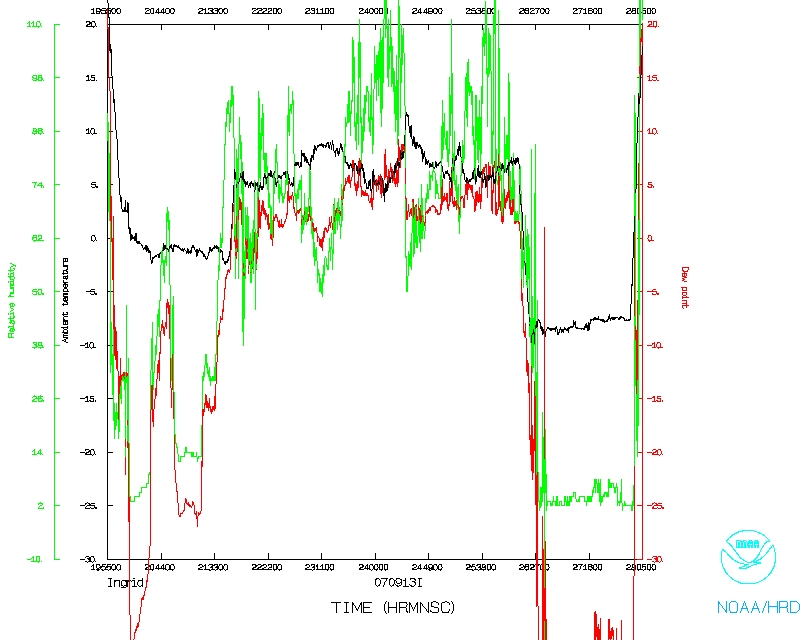 Temperature and Moisture |
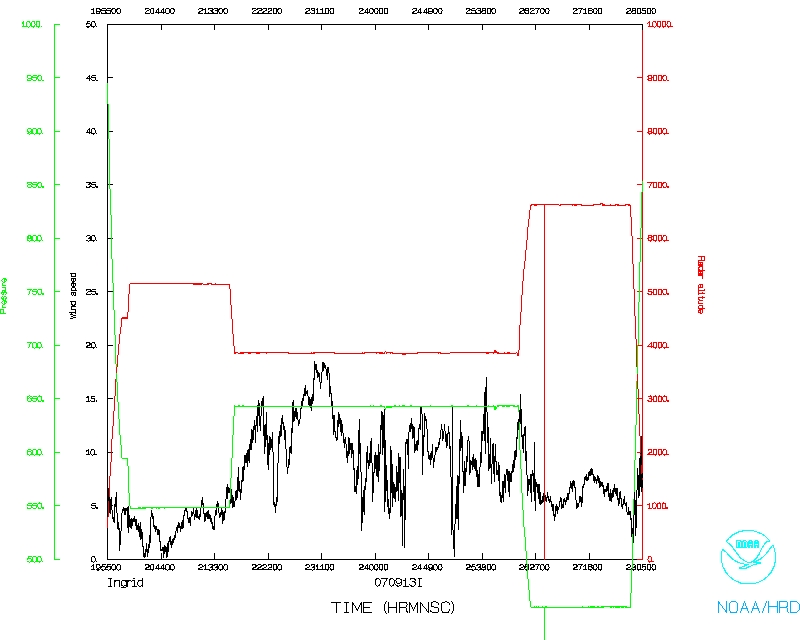 Wind and Atlitude |
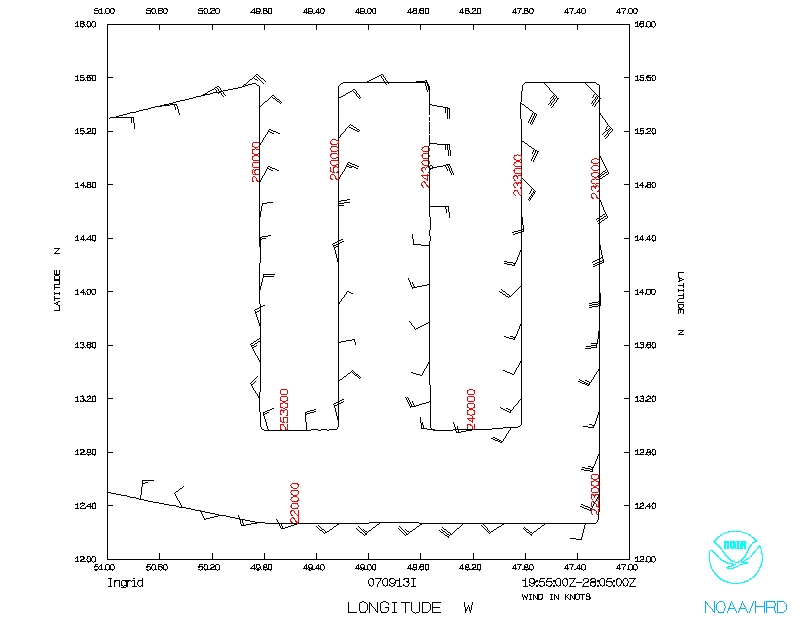 Flight track detail |